If you have been doing home film development, then the term stand-development might have crossed your eyes. And when it comes to the process, I’m still relatively new to using stand-developing in my black and white film processing toolkit. While I’ve had some successes when it comes to handling particularly rough or even unknown film stocks, it isn’t a method for all films. So for today’s post, I went out with three different films, Ilford FP4+, Rollei Superpan 200, and Kodak TMax 400. Each shot on a different day, in different conditions, and various cameras. Then I went and soaked all three rolls in a single tank for one hour in a Rodinal bath. Now I’ve done something like this before using all three flavours of the Derev Pan films, but never such a wide range of stocks. The real questions is that is stand-developing a magic bullet, or are you just being lazy?
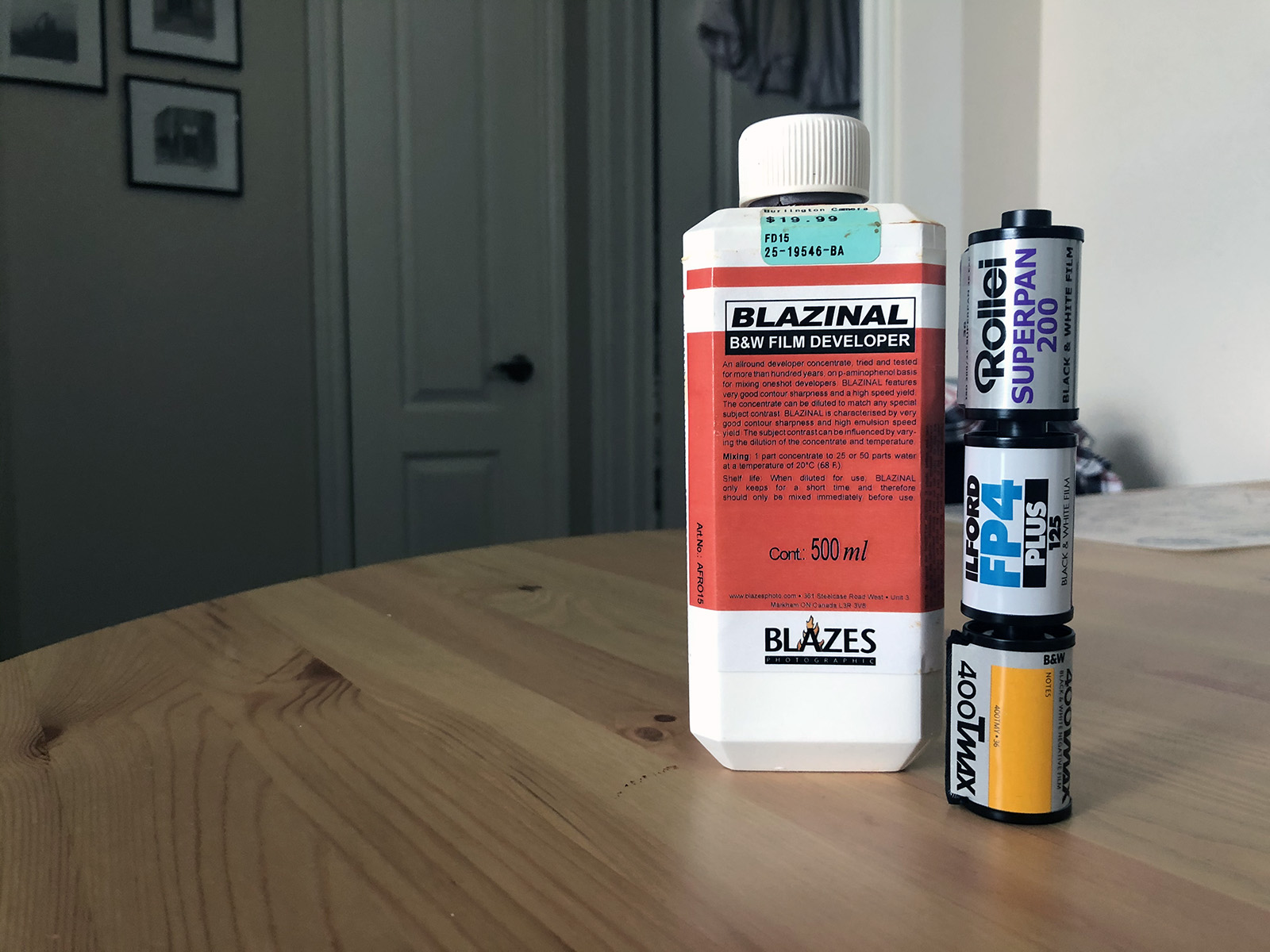
Traditionally stand-developing is done using a highly-dilute working solution of a black & white developer and a minimal amount of agitation over a long period. Hence the use of the word ‘stand’ although I feel it has more to do with the amount of standing around that you do throughout the time. Rodinal is often the developer of choice running with a dilution of either 1+100 or 1+200, then letting it develop over one hour for 1+100 or two hours for 1+200. However, I have done differently with OK results. But Rodinal isn’t the only developer that you can use, I’ve had good luck with stand-developing using Kodak HC-110 using the unofficial Dilution J for Joker (is wild) and the screen name of the gentleman who created the process. Dilution J or 1+150 and then let it sit for forty-five minutes. Just make sure you remember the minimum 5mL rule for HC-110. I’ve also heard of stand-developing using Kodak D-76. Although I’ll stick to either the Rodinal or HC-110 methods as the D-76 is done over twenty-four hours in a fridge.
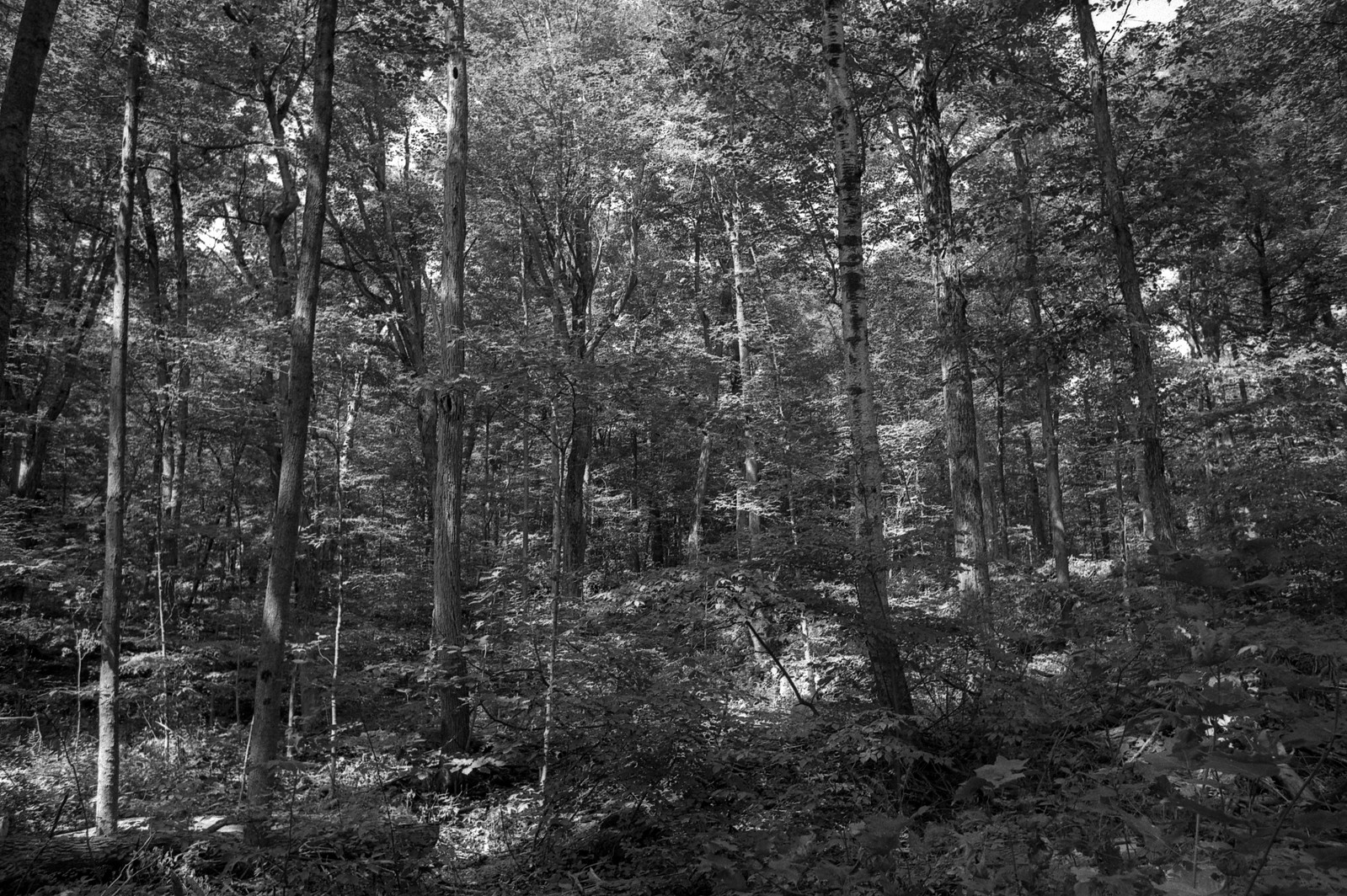

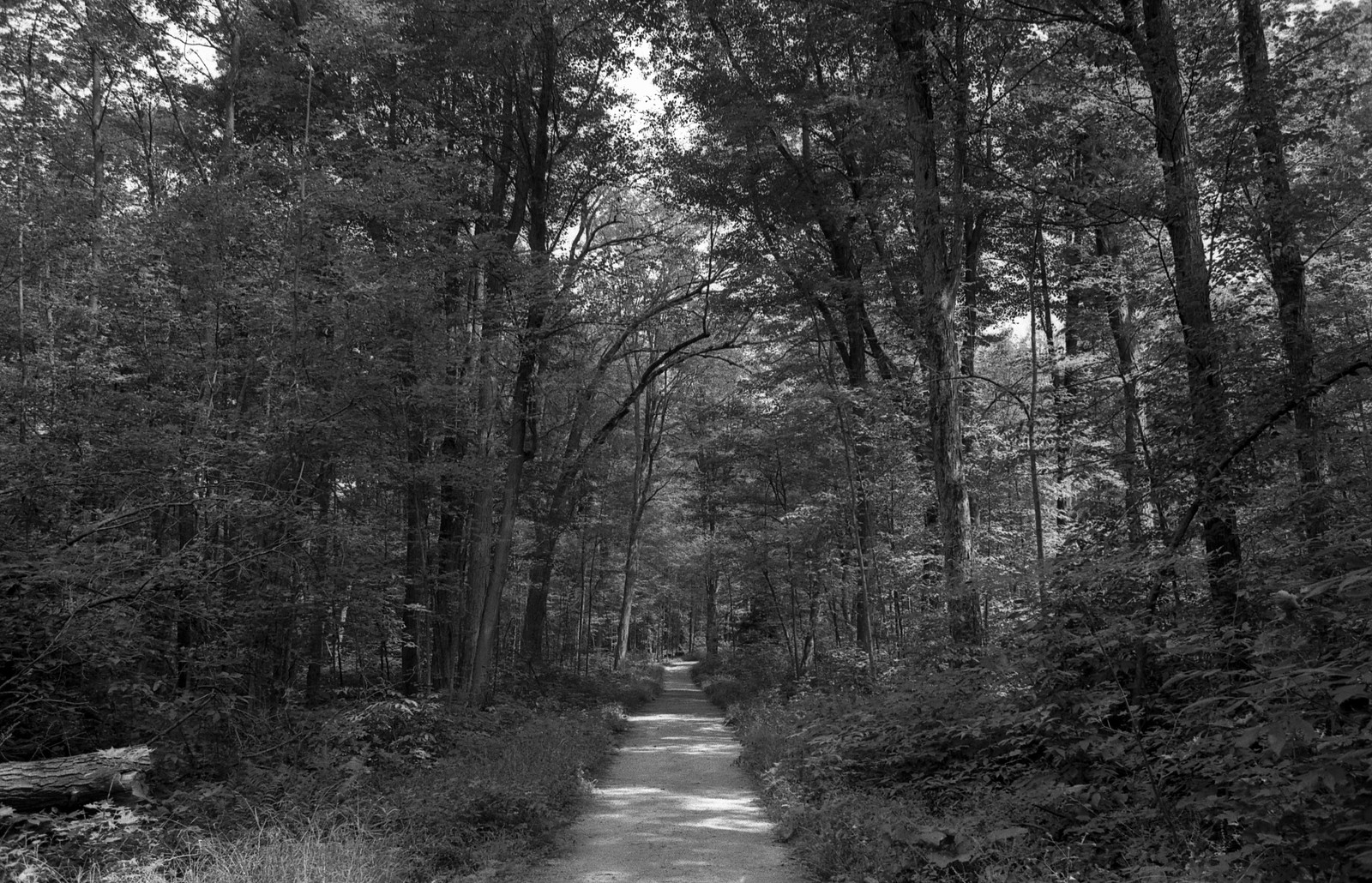
When it comes to technique, there are, like anything related to photography, a couple of schools of thought. You can break these into two categories, stand and semi-stand. In stand developing, it’s just that pour in the chemicals and just let the tank sit there for the total amount of time not touching it once. I’ve never done it that way, so I cannot speak to how well that works or what the results look like. I prefer to use the semi-stand method that introduces a touch of agitation into the mix. After pouring the chemistry, I gently agitate the tank for the first minute, then let it sit, giving two gentle agitations at the half-way mark. I use the technique for both Rodinal and HC-110 solutions. Of course, you can try out both methods and find the solution that works best for you. But I will warn you about one thing bromide drag. Not to get overly technical but on sprocketed films, you’ll notice a series of lines running across the images lined up with where the sprockets are, by adding some agitation you can reduce or even eliminate the presence of the drag. If you find actual agitations too invasive, you can always use the swizzle stick. Now you will still need to use a stop bath (water is OK) and a fixer, this isn’t a monobath.



How and why does this technique work? All film developers are technically called reducers, reducing the silver halide crystals present in film emulsions to actual silver. Still, using a dilute developer and letting them work throughout a more extended period it compensates. In areas where there is greater exposure, the developing agent will work harder for a shorter time, while in areas with less exposure, they will remain active for a longer period. The result is that you have better highlight and shadow detail. Plus the same technique can be applied across multiple film types and speeds. As you can see, I developed three radically different films at the same time in the same tank, and all of them turned out. Not only that, but you’ll see a greater reduction in contrast and grain. And being an almost universal method, even if you don’t know what the film you’re developing is, stick it into the tank for an hour with Rodinal and there’s a good chance it will work.

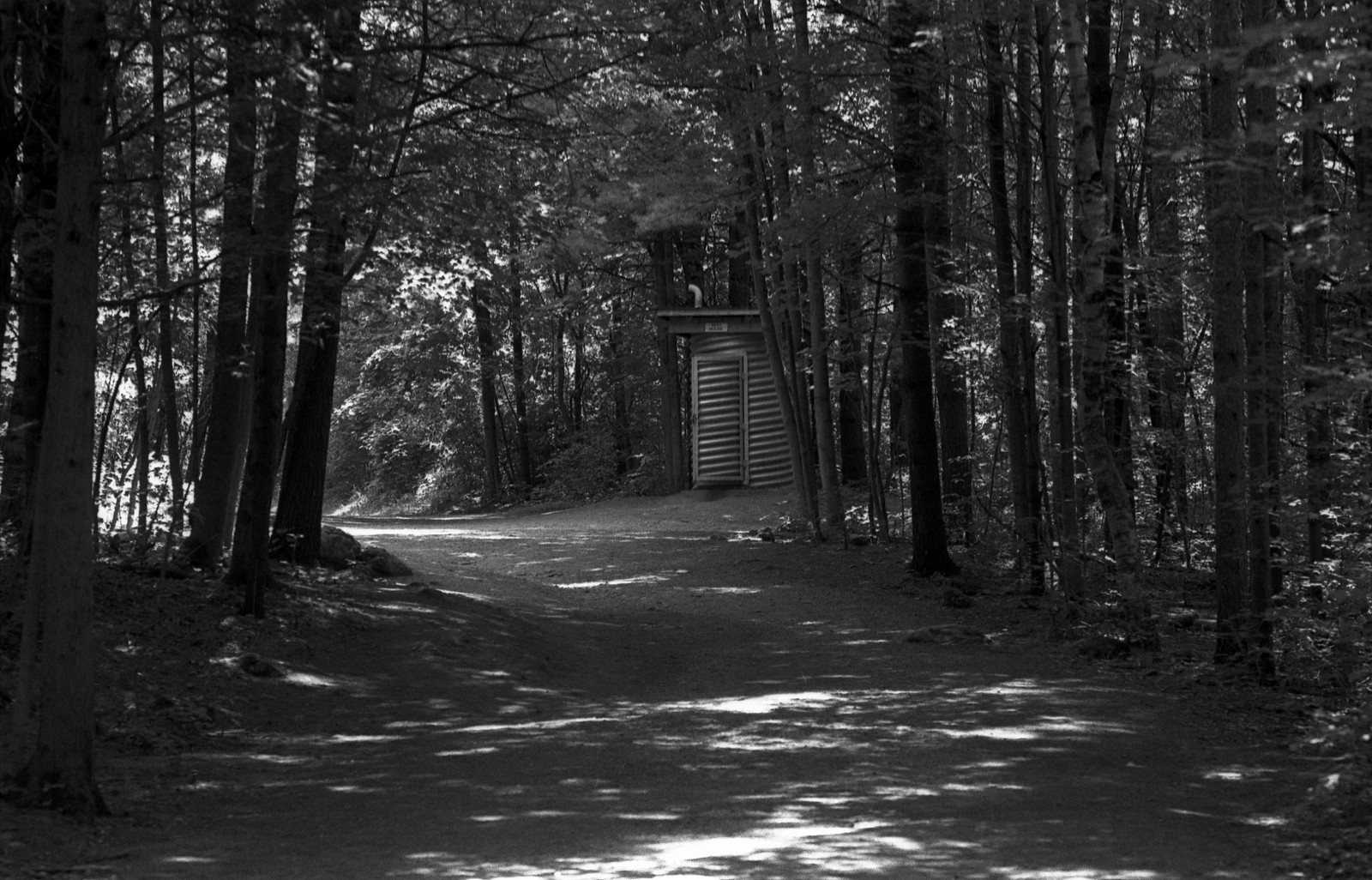
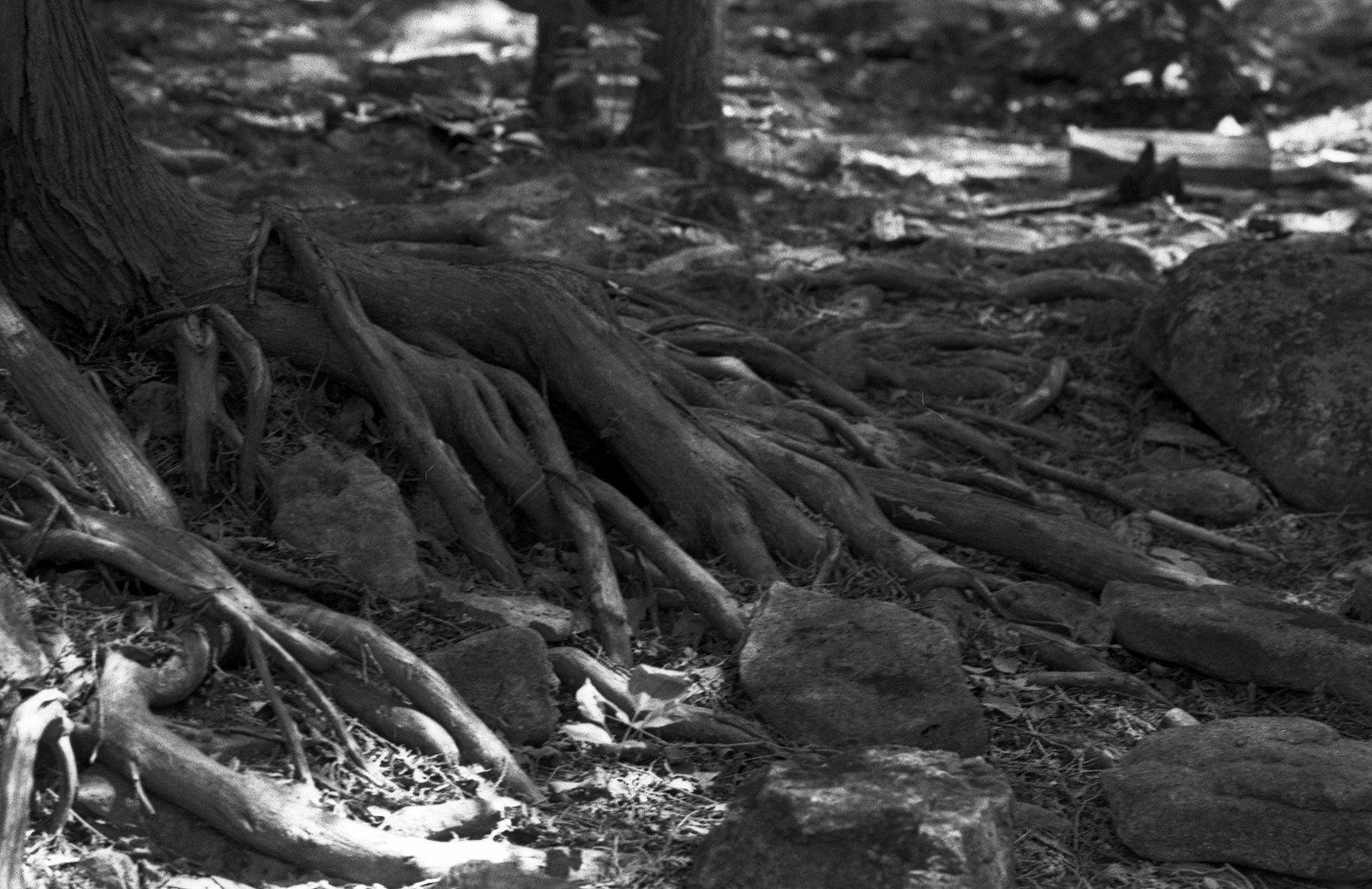
Frankly, after scanning the roll of FP4+, I thought I would throw the other two out because I found some fantastic results. No surprise that the best results came from when I was under cover of the trails at Crawford Lake with lots of mixed light. I ended up with super-low contrast (which doesn’t bother me, remember I love Panatomic-X) but you got a lot of shadow and highlight details as a result. When it comes to Superpan, it is the film that sold me on the whole stand-developing technique. There’s a certain richness in the images, might have the Yellow-12 filter to thank for this, but there’s a deepness. Sure you have a bit more grain, but Superpan has a lot of grain in most developers, but the images are deadly sharp also. The final roll, TMax 400 I’m disappointed with, not that the photos are bad or turned out poorly they didn’t perform well and could be better. There’s a certain grittiness to the images the highlights have detail, but the darker shadows are blocky. A T-Grain film might not be the best option for stand-development but will work in a pinch. If you want an easy, inexpensive way to get into developing your black & white film at home, then take a look at stand developing. You need a minimum amount of chemicals, only Rodinal or HC-110 and a Fixer. You can use water as your stop bath (I use running water through the tank for two minutes). Plus you don’t have to worry about keeping track of all the different times or dilutions, just the one technique and your microwave timer or a stopwatch will do you fine. In the beginning, I asked the question is stand-developing a magic bullet or are you being lazy? The answer is simple, yes.
I love the final sentence.
I have done stand development with traditional films like FP4 and Tri-X in HC-110 with great success. I remember reading somewhere that it does not work so well with the tabular grain films like Delta and T-Max so I have never tried it. Your experience seems to corroborate with that assertion. If it is not a magic bullet it is awfully damn close.